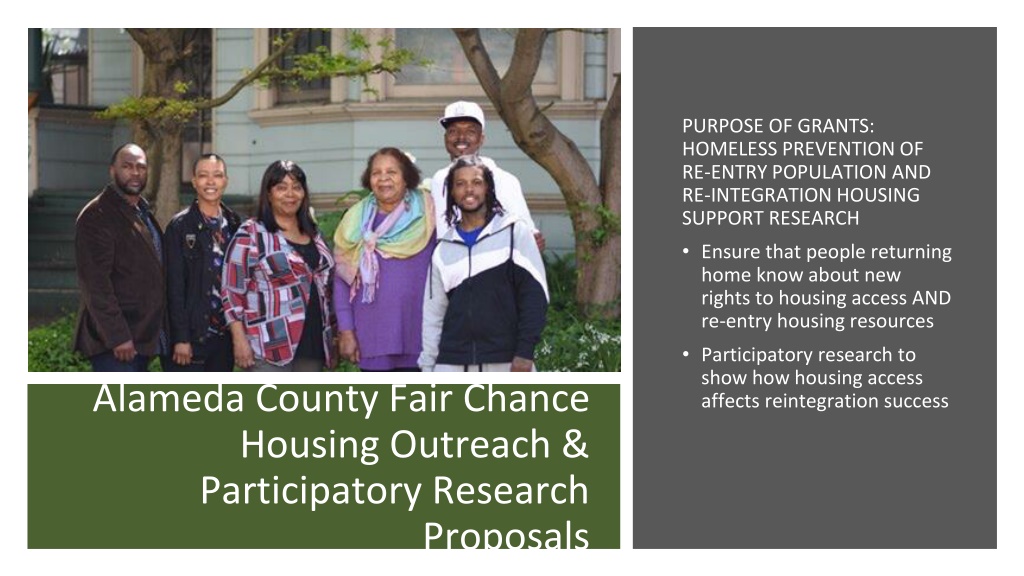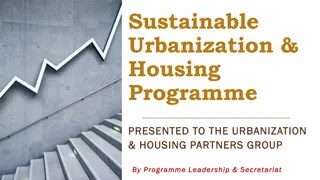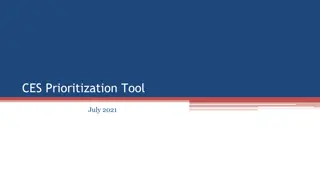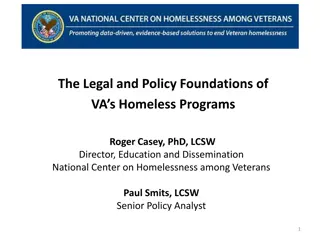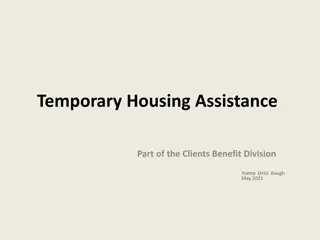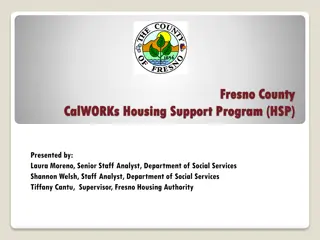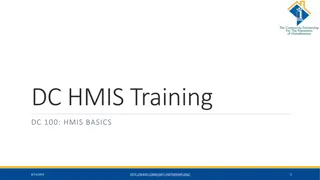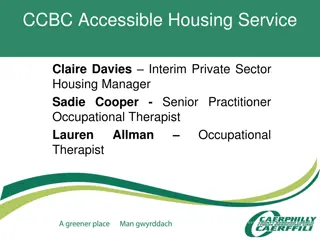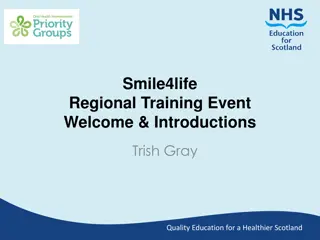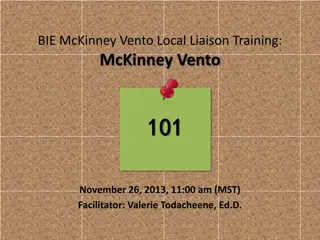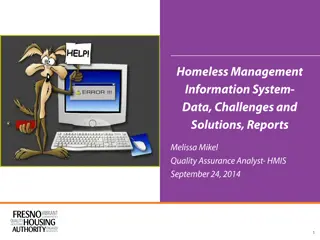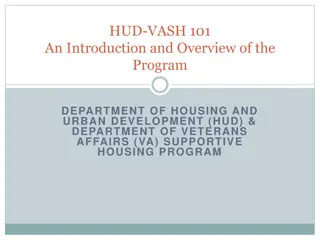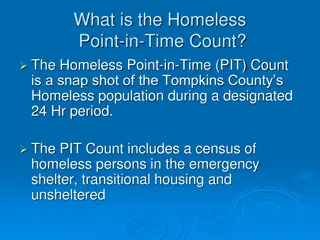Grants for Homeless Re-Entry Housing Support
This initiative focuses on preventing re-entry homelessness by ensuring access to fair chance housing and reintegration resources. Through participatory research, the project aims to inform returning individuals about new housing rights and resources, ultimately enhancing reintegration success.
Uploaded on Feb 17, 2025 | 0 Views
Download Presentation

Please find below an Image/Link to download the presentation.
The content on the website is provided AS IS for your information and personal use only. It may not be sold, licensed, or shared on other websites without obtaining consent from the author.If you encounter any issues during the download, it is possible that the publisher has removed the file from their server.
You are allowed to download the files provided on this website for personal or commercial use, subject to the condition that they are used lawfully. All files are the property of their respective owners.
The content on the website is provided AS IS for your information and personal use only. It may not be sold, licensed, or shared on other websites without obtaining consent from the author.
E N D
Presentation Transcript
PURPOSE OF GRANTS: HOMELESS PREVENTION OF RE-ENTRY POPULATION AND RE-INTEGRATION HOUSING SUPPORT RESEARCH Ensure that people returning home know about new rights to housing access AND re-entry housing resources Participatory research to show how housing access affects reintegration success Alameda County Fair Chance Housing Outreach & Participatory Research Proposals
Grant Proposal on Re-entry Homelessness Prevention: Community Outreach on Fair Chance Housing & Re-entry Housing Resources Partnership: Just Cities, AUON, BOSS, ASPC, CURYJ 73% of Oakland Homeless Encampment residents have a criminal record (Just Cities/Goldman School research survey) Ensure that 20,000 residents know about new legal rights AND housing resources Network power with leading re-entry groups COVID outreach Power of cultural arts & inspiration Networks + Safe Street Outreach + Social Media + Multimedia + Billboards/Bus Ads Leverages $532,000/2 years from City of Oakland & private foundations AC Request: $176,000/2 years
Current research gaps on housing/re-entry Grant Proposal on Housing & Re-entry Participatory Impact Evaluation Study Partnership w/ Prof Veronica Terriquez, UCLA Urban Planning, Just Cities & UC Berkeley Future Histories Lab & City Planning Co-led by Re-entry Leaders for transformative justice research model Evaluates impact of the FCH policies & housing stability to re-entry success Assesses any unintended consequences of removing discriminatory barrier Private/Public Funding Committed: $264,000/2years AC Request: $154,000/2 years
Fair Chance Housing Policy Participatory Impact Evaluation- Purpose & Results 1. First evaluation study of fair chance housing policies in the nation 2. Provides data that Oakland & Berkeley government officials need to maintain the ordinances 3. Provides data that other jurisdictions are looking for in order to pass new fair chance housing laws 4. Potential resulting data from the impact evaluation study: a. How many people were able to access housing when discrimination was removed? b. What types of housing were people able to access? (This helps make the case that formerly incarcerated people are not a monolith)? c. What support services and resources were available and needed to find and maintain housing? d. What are ongoing housing barriers? e. What are any unintended consequences of removing discrimination?
Reentry Housing Research- Purpose & Results Provide data on the relationship between housing stability and anti- recidivism: Lack of adequate research on housing and anti-recidivism Shift funding priorities for dignified housing for formerly incarcerated people, and other solutions that lead to successful reintegration
Distinction from BARHII Work BARHII- Providing leadership training programs on racial equity BARHII is not conducting an evaluation of Fair Chance Housing policies enacted in Berkeley and Oakland. BARHII is not conducting research on reentry housing and the role of housing stability on anti-recidivism.
